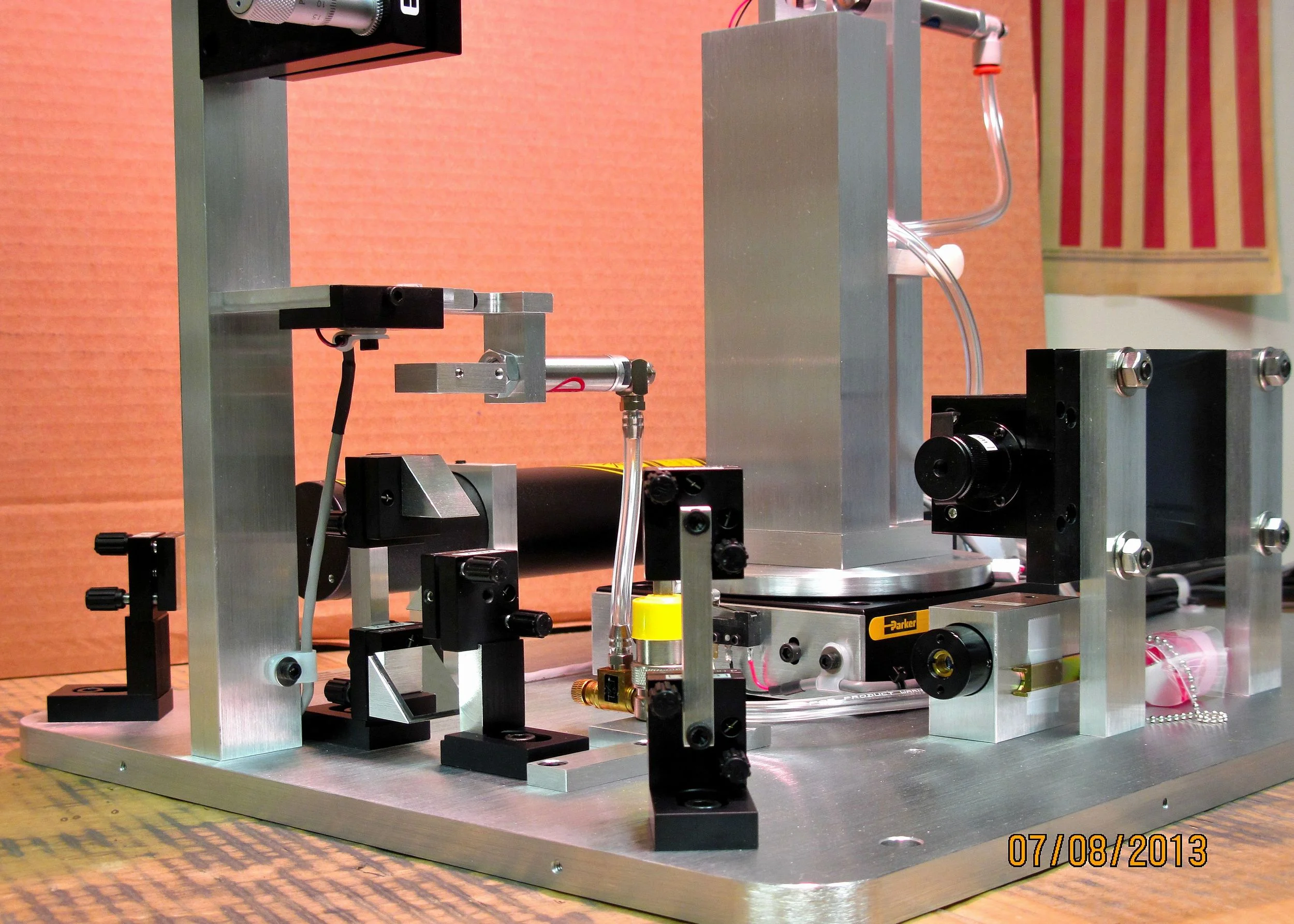Measuring Index/Birefringence of Bulk Polymers and Flexible Polymer Films
The Model 2010/M measures refractive index in machine (x), transverse (y), and perpendicular (z) directions for thin flexible polymer films and thicker bulk materials, permitting rapid and accurate determination of polymer density and crystallinity in approximately one minute. In-plane refractive index can also be measured along any arbitrary in-plane direction by a simple rotation of the sample about the coupling point. In some cases, information concerning index gradients in the material vs depth is obtainable, particularly in the case of high index surface skins. Measurement of coating thickness and index is also possible for coating thicknesses greater than approximately one micron. With a single prism, indices ranging from 1.3 to 2.0 are easily measured and measurements are rapid (typically 20 seconds), free of operator subjectivity, and do not require the use of index matching fluids. The spatial resolution of the measurement is approximately 1 mm, permitting determination of spatial differences in index/crystallinity.
Index of polymer materials thicker than 10 microns (0.4 mil) is easily analyzed by the 2010’s bulk index measurement mode. In this mode, the 2010/M simply senses the critical angle at the interface between the prism and the material in contact with the prism:
If a material of index n is in contact with a prism of index np, as the sample and prism are rotated with respect to the stationary laser beam, light striking the base of the prism will be totally reflected to the system photodetector until the angle of incidence becomes less than the critical angle θc, where
The Model 2010/M determines the critical angle automatically and since np is well known, the film index is easily determined from equation (1).
The ability to measure refractive index in x, y, and z directions (see Fig .1) allows measurement of percent crystallinity since the average of the x, y and z indices is directly proportional to density/crystallinity (Robert J. Samuels, J. Appl. Pol. Sci., Vol. 26 (1981), p. 1383). Fig. 2 is an example of average index vs crystallinity for polypropylene from this reference and similar data exists for PET. Measurement of x, y, and z indices has also been used to study crystallinity, orientation, and tear properties in polyethylene (Krishnaswamy. et al., Polymer, vol. 41 (2000), p. 9205 and Fruitwala et al., 1994 ANJEC Proceedings, p. 2252). In addition, since the 2010’s index measurement probes primarily the first few microns at the surface of the material (in some cases, refractive index information can be obtained for deeper regions – see below) refractive index data can be obtained for both sides of the film and sample-side differences (e.g., preferential cooling rates) can be studied.
Thickness and index can also be measured for very thin flexible polymer films as well as coatings or coextruded layers in the ~1-75 micron thickness range (see Fig. 3). The Model 2010 also offers unique capabilities for characterizing index gradients vs depth for the high index surface skins which often occur in polymer materials. If a high index region is present at the surface of a material, there may be two breaks in the intensity vs angle curve and it is often possible to measure the index at the surface as well as the bulk index. In some cases, individual waveguiding modes may exist in the high index skin, and it may even be possible to calculate an approximate thickness and index for the skin layer.
To provide compatibility with Abbe refractometer measurements made at 589 nm, a 594 nm HeNe laser can easily be substituted for the 633 nm HeNe which is normally provided with the 2010/M.
Fig. 1. Measurement of x. y, and z indices for 2-liter PET beverage bottle: Refractive indices along axial (long axis), circumferential, and perpendicular plane directions for outer bottle surface.
Fig. 2. Volume fraction crystallinity (Vc) vs. average index for polypropylene
Fig. 3. Measurement of coating thickness and index on polyester sheet





